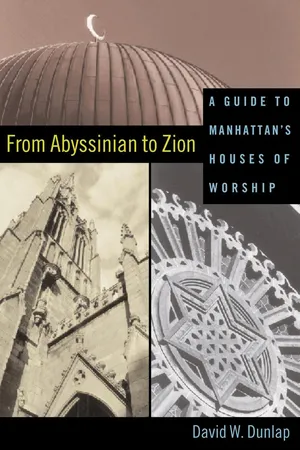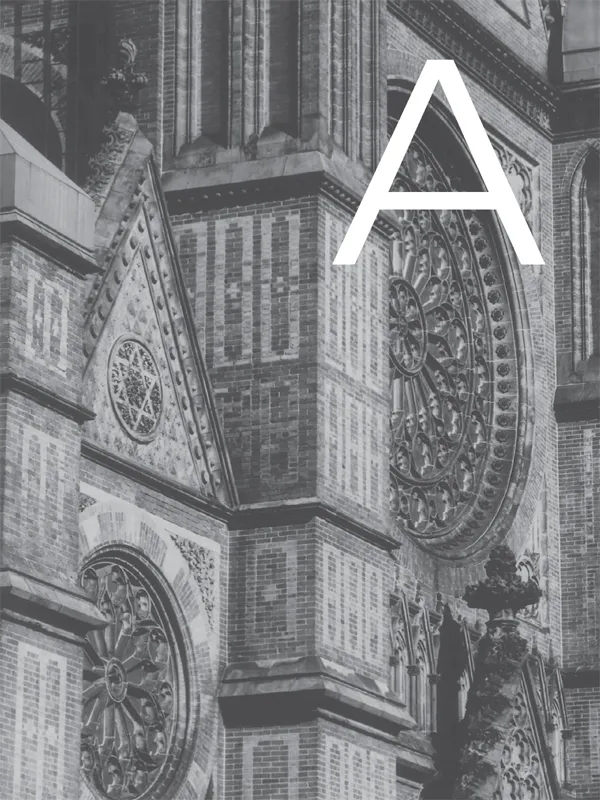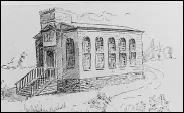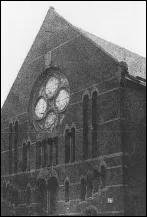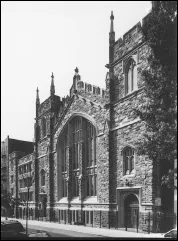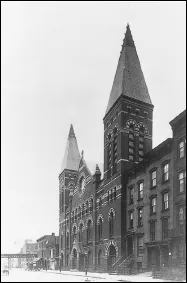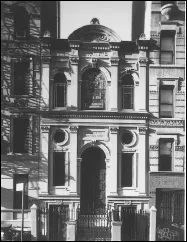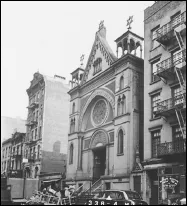![]()
Abyssinian Baptist Church. They were only looking for a place to worship. Several traders from Abyssinia—now Ethiopia—came to the First Baptist Church on Gold Street one Sunday in 1808. They were ushered to the slave loft. “Wealthy, educated world travelers, proud human beings, with a well-defined philosophy of religion that matched that of anyone in that auditorium, they resented this and walked out in protest,” the Rev. Adam Clayton Powell Jr. wrote. Eighteen black members of First Baptist joined their boycott, forming the nucleus of Abyssinian Baptist Church, founded in 1809.
They worshiped first at 44 Anthony Street [B39], as Worth Street was called, moving in 1856 to 166 Waverly Place [E46], when Greenwich Village was an African-American hub. This little building once stood on Christopher Street, but had been moved in its entirety in 1826 by the Second Reformed Presbyterian Church. Abyssinian followed the black population uptown in 1902, moving to 242 West 40th Street [I50], the former Fourth German Mission Reformed Dutch Church. Membership swelled after the Rev. Adam Clayton Powell Sr. began preaching in a tent next to Marcus Garvey’s Liberty Hall in Harlem. The new Abyssinian was built on the same block in 1922/1923, at 132 West 138th Street [●T16★], since renamed Odell M. Clark Place after an Abyssinian deacon. The amphitheater-style church was designed by Charles W. Bolton & Son in Tudor Gothic style. There were some 13,000 members in the 1930s, when Abyssinian was described as the largest and most influential black church in New York, and the world’s largest Baptist church.
Abyssinian Baptist Church [E46]
Abyssinian Baptist Church [I50]
Abyssinian Baptist Church [T16]
Much of its influence was owed to the younger Powell, a charismatic maverick who assumed the pulpit in 1937 and, in 1944, became the first African-American elected to the House of Representatives from New York State. Upper Seventh Avenue was renamed in his honor. He was followed by the Rev. Samuel DeWitt Proctor and the Rev. Calvin O. Butts III, who established the Abyssinian Development Corporation, which has played a leading role in the recent redevelopment of Harlem.
Actors’ Chapel. See St. Malachy’s Church
Actors Studio. See West Forty-fourth Street United Presbyterian Church
Actors’ Temple. See Ezrath Israel, Congregation
Adams-Parkhurst Presbyterian Church. This Victorian Gothic castle by J. Cleveland Cady was built in 1875 at 211 East 30th Street [H17] as the Memorial Chapel of the Madison Square Presbyterian Church, later renamed to honor two pastors of Madison Square: the Rev. William Adams and the Rev. Charles Henry Parkhurst. The Armenian Evangelical Church and radio station WLIB shared the building over time. Adams-Parkhurst merged in 1965 with the Church of the Covenant, and the sanctuary was razed. A 10-story apartment building now stands on the site.
Adams-Parkhurst Presbyterian Church [H17]
Adas Yisroel Anshe Mezeritz, Congregation. Unlike most nearby synagogues, this exquisite sanctuary at 415 East 6th Street [●F19] is marvelously preserved. It was altered in 1910 from a three-story dwelling by Hermann Horenburger. It is nearly identical to the contemporary Congregation Kolbuszower Teitelbaum Chevra Banai. Adas Yisroel Anshe Mezeritz (Community of Israel, People of Mezeritz) was founded in 1892 and named for a town in Poland that was once a center of Jewish learning. The Orthodox group remains here to this day.
Congregation Adas Yisroel Anshe Mezeritz [F19]
Adoration, Chapel of the. The Cenacle of St. Regis, at 628 West 140th Street [S23], a Roman Catholic retreat for women and children, was built in 1901 to designs by W. E. Bosworth and W. C. Chase. A large chapel stood on the bucolic grounds, which were used until 1952.
Advent Hope, Church of the. At home in German Yorkville, at 111 East 87th Street [●N8], is the HAUS DER ADVENT HOFFNUNG, as it says over the entryway, a Seventh-Day Adventist church. Plans for the Church of the Advent Hope were filed in 1955 by the architect Alfred B. Heiser.
Church of the Advent Hope [N8]
Advent Lutheran Church. Not far on the map of Manhattan from William A. Potter’s Fourth Universalist Society, Advent Lutheran Church, at 2504 Broadway [●M1], is quite distant on the map of Europe. Although it was also designed by Potter, Advent draws on German rather than English Gothic for its inspiration. Built in 1900/1901, the sanctuary almost seems to presage the planar interpretation of Gothic in later twentieth-century churches. It is still used by the congregation that built it, a Lutheran body founded in 1897. Advent Lutheran was joined in 2000 by the peripatetic Broadway United Church of Christ, which has moved from one home to another in the 30 years since its own Broadway Tabernacle was sold and demolished.
Advent Lutheran Church [M1]
Agudas Anshei Mamod Ubeis Vead Lachachomim, Congregation. See Chung Te Buddhist Association
Agudat Yesharim, Congregation. See Park Avenue Synagogue
Agudath Achim M’Krakau, Congregation. Originally built as a parochial school in 1855, 54 Pitt Street [F51] later served Congregations Brith Sholem, Kochob Jacob Anshe Kamenitz de Lite, Poel Zedek Anshe Ileya, and Agudath Achim M’Krakau. This congregation from Poland, founded in 1867, moved to 525 West 147th Street [●S10], now Bethel Holy Church of Deliverance.
Congregation Agudath Achim M’Krakau [F51]
Ahavath Acheim Anshe Ungarn, Congregation. Congregation Ohab Zedek’s first synagogue, built in 1881 at 70 Columbia Street [F54], was later used by the Hungarian congregation Ahavath Acheim Anshe Ungarn.
Ahawath Chesed Shaar Hashomayim, Congregation. See Central Synagogue
Ahawath Yeshurun Shara Torah, Congregation. The name of Congregation Ahawath Yeshurun Shara Torah (Love of Israel, Gates of the Torah) is still visible at 638 East 6th Street [●F25], which is now the Sixth Street Community Center.
All Angels’ Church. In the community of Seneca Village, in the middle of what would become Central Park, All Angels’ Episcopal parish was organized in 1846. Its first wooden church, described by the Rev. Thomas McClure Peters as a place “in which white and black and all intermediate shades worshiped harmoniously together,” was consecrated in 1849 and stood approximately on the line of West 85th Street [M19]. Property condemnation for the new park closed this church in 1856. A new sanctuary was opened two years later at 428 West End Avenue [M28]. In 1873, the Rev. Charles F. Hoffman was called as rector. Heir to a large fortune, he offered to pay for the cost of a new church on the same site [M29]. Built from 1888 to 1890 and designed by Samuel B. Snook of J. B. Snook & Sons, this Gothic building was ingeniously oriented on a diagonal bias, creating a 140-foot-long sanctuary on a 100- by 102-foot plot of ground. But the size of All Angels’ Church, which seated 1,200, was ultimately a liability...
